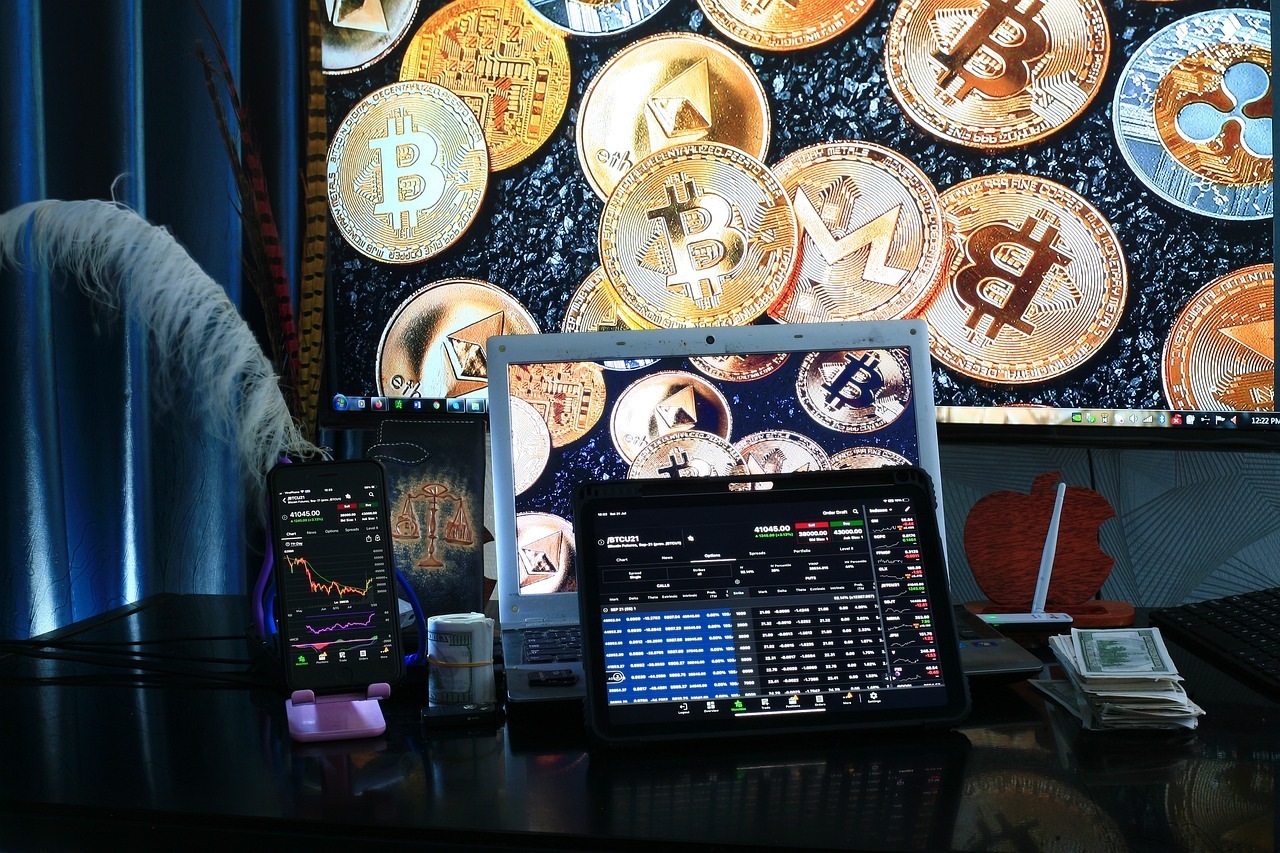
Successful Crypto Day Trading!
Introduction
The cryptocurrency market is known for its volatility and rapid price movements, making it a playground for day traders. Day trading involves buying and selling assets within the same day to capitalize on short-term price fluctuations. With the right strategies and mindset, it can be a profitable venture. As someone who has been involved in the crypto trading scene for years, I’m here to share insights and tips to help you succeed in crypto day trading.
Understanding Crypto Day Trading
What is Day Trading?
Day trading is a strategy where traders buy and sell financial instruments within the same trading day. In the context of cryptocurrencies, this means taking advantage of the market’s volatility to make quick profits. Unlike long-term investing, where you hold assets for months or years, day trading focuses on short-term gains.
How It Differs from Other Trading Strategies
Day trading is distinct from other trading strategies like swing trading and long-term investing. Swing traders typically hold positions for several days or weeks to capitalize on broader market swings, while long-term investors buy and hold assets for extended periods, betting on their long-term growth. Day trading requires constant attention to the market and quick decision-making.
Pros and Cons
Pros:
- High Profit Potential: The volatile nature of cryptocurrencies can lead to significant profits within short periods.
- Liquidity: Cryptocurrencies can be bought and sold quickly due to their high liquidity.
- No Overnight Risk: Since all positions are closed by the end of the day, there’s no risk of adverse overnight price movements.
Cons:
- High Risk: The same volatility that offers profit potential also brings risk.
- Time-Consuming: Day trading requires constant monitoring of the market.
- Emotional Stress: The fast-paced nature can be stressful and emotionally draining.
Preparing for Day Trading
Education and Research
Before jumping into day trading, it’s crucial to educate yourself. Understanding the basics of cryptocurrency and trading principles is essential. Websites like CoinDesk and Investopedia, as well as books like “Cryptoassets” by Chris Burniske and Jack Tatar, are excellent resources. Continuous learning will help you stay informed about market trends and strategies.
Setting Up Your Trading Environment
A successful day trading setup includes a reliable computer, a fast internet connection, and a trading platform. Your trading platform should offer real-time data, charting tools, and quick execution of trades. Popular platforms include Binance, Coinbase Pro, and Kraken.
Choosing the Right Exchange
Selecting the right exchange is vital. Consider factors such as security, fees, and the variety of trading pairs offered. Ensure the exchange has a good reputation and offers the tools you need for day trading. I recommend starting with well-known exchanges like Binance or Coinbase Pro for their reliability and user-friendly interfaces.
Developing a Trading Plan
Setting Goals
Having clear, realistic goals is essential. Decide how much profit you aim to make daily or weekly, and be prepared to accept losses. Having specific targets will help you stay focused and disciplined.
Risk Management
Effective risk management is crucial in day trading. Always use stop-loss orders to limit potential losses. Never risk more than a small percentage of your trading capital on a single trade. This approach protects your overall investment from significant losses.
Trading Strategies
Several trading strategies can be effective for day trading:
Scalping: Involves making dozens or hundreds of trades in a day to “scalp” small profits from each trade.
Range Trading: Profits from the natural oscillation of prices within a particular range.
Momentum Trading: Involves identifying and trading on the momentum of a price move, betting that it will continue in the same direction for a while.
Technical Analysis Basics
Reading Price Charts
Understanding how to read price charts is fundamental. Candlestick charts are commonly used in day trading because they provide more information than line charts. Each candlestick shows the opening, closing, high, and low prices for a specific period.
Key Indicators
Several technical indicators can help you make informed trading decisions:
Moving Averages: Help identify the direction of the current trend.
Relative Strength Index (RSI): Indicates whether an asset is overbought or oversold.
MACD (Moving Average Convergence Divergence): Shows the relationship between two moving averages of a price.
Bollinger Bands: Provide a relative definition of high and low prices.
Identifying Patterns
Recognizing patterns can be a powerful tool in day trading. Common patterns include:
Head and Shoulders: Indicates a potential reversal.
Triangles: Can signal continuation or reversal, depending on the type.
Double Top/Bottom: Indicates a potential trend reversal.
Executing Trades
Placing Orders
Understanding the different types of orders is crucial:
Market Orders: Execute immediately at the current market price.
Limit Orders: Set a specific price at which you want to buy or sell. The order will only be executed if the market reaches that price.
Stop-Loss Orders: Automatically sell an asset when its price falls to a certain level, limiting potential losses.
Timing the Market
Timing is everything in day trading. Focus on times of high liquidity and volatility, such as the opening and closing hours of major markets. Develop a strategy for entering and exiting trades, and stick to it.
Monitoring Trades
Once you’ve placed a trade, monitor it closely. Be ready to adjust your strategy if the market moves against you. Use tools like alerts and notifications to stay on top of your trades without needing to constantly watch the screen.
Emotional and Psychological Aspects
Dealing with Emotions
Day trading can be stressful. It’s important to manage your emotions and not let fear or greed dictate your decisions. Developing a routine and sticking to your trading plan can help maintain discipline.
Maintaining Discipline
Discipline is key to successful day trading. Stick to your trading plan and resist the urge to make impulsive trades. Keep a trading journal to track your decisions and learn from your successes and mistakes.
Learning from Mistakes
Every trader makes mistakes. The key is to learn from them. Analyze your trades, identify what went wrong, and adjust your strategy accordingly. Continuous improvement is essential in the fast-paced world of day trading.
Staying Informed and Updated
Market News and Analysis
Staying informed about market trends and news is crucial. Use resources like CoinDesk, CoinTelegraph, and cryptocurrency forums to keep up with the latest developments. Subscribe to newsletters and follow influential traders on social media for insights and tips.
Joining Trading Communities
Engaging with other traders can provide valuable insights and support. Join online forums, participate in social media groups, and attend local meetups. Sharing experiences and strategies with others can enhance your trading skills.
Continuous Learning
The cryptocurrency market is constantly evolving. Continuously educate yourself about new trends, tools, and strategies. Attend webinars, take online courses, and read books to stay ahead of the curve.
Conclusion
Day trading in the cryptocurrency market can be a profitable venture if approached with the right knowledge and discipline. By understanding the basics, developing a solid trading plan, and managing your emotions, you can unlock the secrets to successful crypto day trading. Remember, continuous learning and staying informed are key to navigating this dynamic market.
Additional Resources
Glossary of Terms
- Candlestick Chart: A type of price chart that shows the open, high, low, and close prices for a specific period.
- Stop-Loss Order: An order to sell an asset when it reaches a certain price, used to limit potential losses.
- Scalping: A trading strategy that involves making numerous trades to capture small price movements.
Recommended Books and Articles
- “Cryptoassets: The Innovative Investor’s Guide to Bitcoin and Beyond” by Chris Burniske and Jack Tatar.
- “The Bitcoin Standard: The Decentralized Alternative to Central Banking” by Saifedean Ammous.
Helpful Tools and Platforms
- TradingView: For advanced charting and technical analysis.
- CoinMarketCap: For tracking cryptocurrency prices and market data.
- Binance: A popular exchange with a wide range of trading pairs and tools.
By following these guidelines and continuously improving your skills, you can navigate the exciting world of crypto day trading with confidence. Happy trading!







